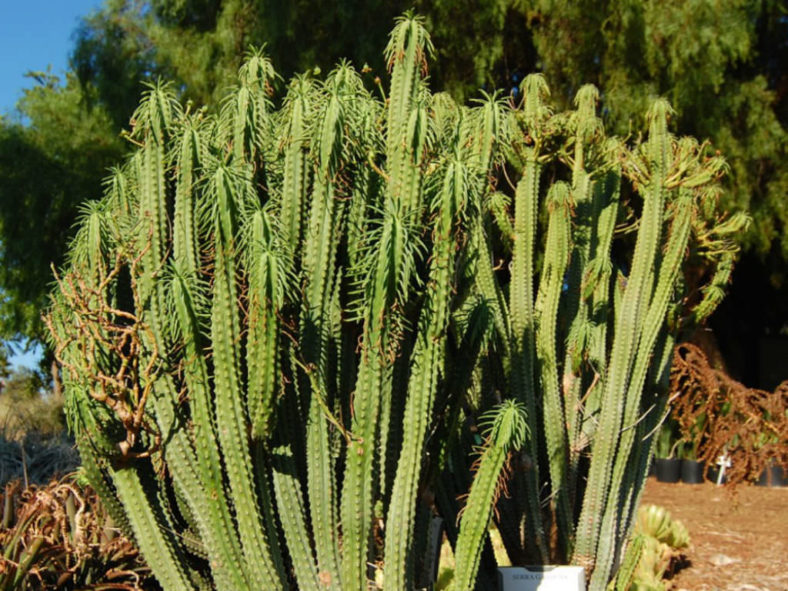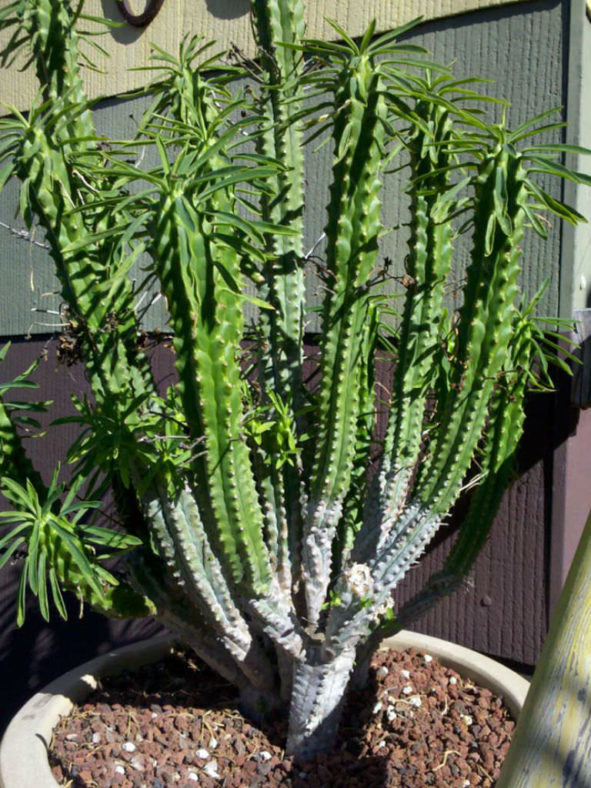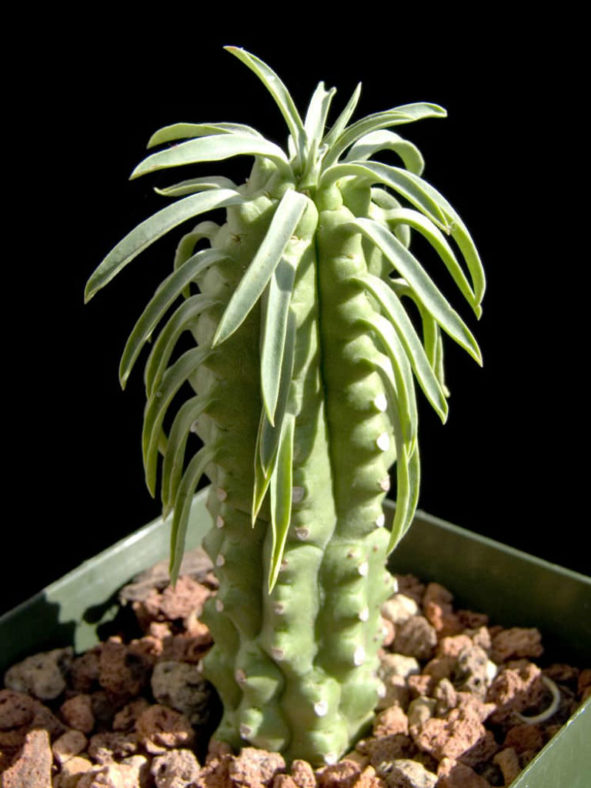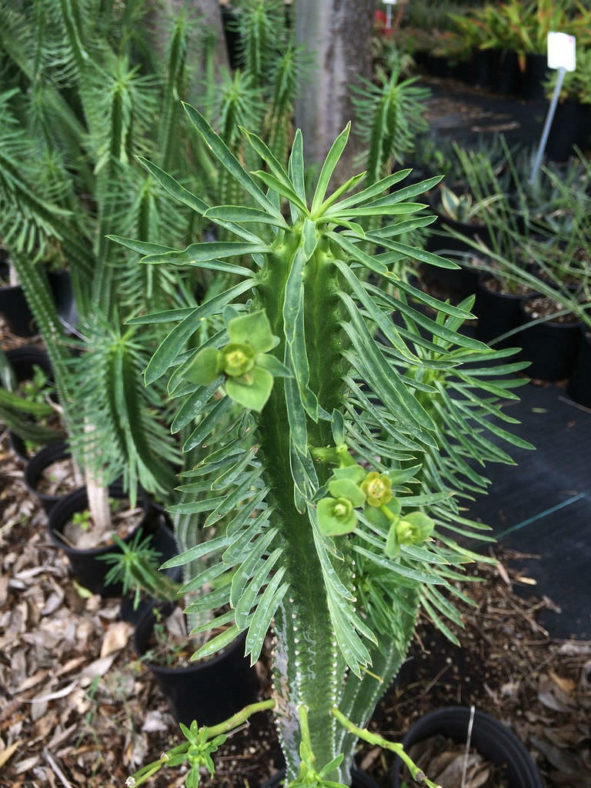Scientific Name
Euphorbia loricata Lam.
Synonym(s)
Euphorbia armata, Euphorbia eustacei, Euphorbia hystrix, Treisia hystrix
Scientific Classification
Family: Euphorbiaceae
Subfamily: Euphorbioideae
Tribe: Euphorbieae
Subtribe: Euphorbiinae
Genus: Euphorbia
Origin
Euphorbia loricata is native to South Africa. It grows on stony sandstone slopes and flats from Vredendal to Clanwilliam and Laingsburg in the Western Cape province.
Description
Euphorbia loricata is a succulent shrub that has cylindrical, tuberculate branches with numerous long, stout, often white, spinescent peduncles. It can grow up to 3.3 feet (1 m) tall, branching from the base and above. The fleshy, erect branches can reach up to 0.6 inches (1.5 cm) in diameter. They range from light green to reddish when grown in full sun. The leaves are narrow, lance-shaped, clustered towards the branch tips, and eventually drop off, measuring up to 3 inches (7.5 cm) long and 0.4 inches (1 cm) wide.
During the summer, Euphorbia loricata produces many solitary cyathia (false flowers) around the tips of the branches, each on a persistent and later spinescent peduncle in the axil of the tubercle, with five entire green glands. The peduncles can grow up to 2 inches (5 cm) long. The fruits are glabrous to puberulous capsules measuring up to 0.3 inches (0.8 cm) in diameter.

Hardiness
USDA hardiness zones 10a to 11b: from 30 °F (−1.1 °C) to 50 °F (+10 °C).
How to Grow and Care
Euphorbias are very easy to care for. These plants require a little pampering to become established, but once they are, they are self-sufficient. In fact, more die from too much care and watering than from neglect. Euphorbias need well-draining soil and lots of sunlight. They are not particular about soil pH but cannot tolerate wet soil. Unlike most succulents, Euphorbia does not handle long periods of drought well. It may need weekly watering during the summer. Water whenever the soil is dry several inches below the surface. Water deeply, but don't let them sit in wet soil, which can cause root rot. Add some organic matter or fertilizer to the planting hole. Feed with a half-strength fertilizer monthly if you are growing them in containers or your soil is poor.
These succulents can be grown from seed, but they can be difficult to germinate (or even find). They are usually propagated by cuttings. This can be tricky because of the exuding sap. Rooting hormone is recommended with Euphorbias. They tend to grow problem-free, but there are a few pests and diseases to be alert for.
See more at How to Grow and Care for Euphorbia.
Links
- Back to genus Euphorbia
- Succupedia: Browse succulents by Scientific Name, Common Name, Genus, Family, USDA Hardiness Zone, Origin, or cacti by Genus
Photo Gallery
Click on a photo to see a larger version.


